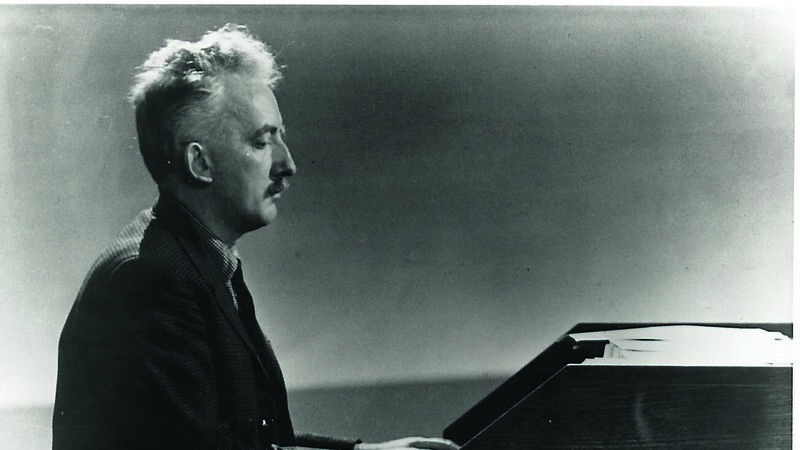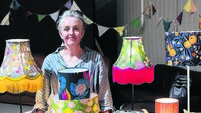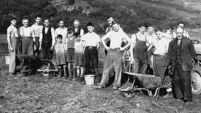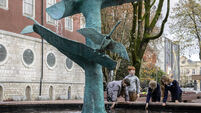A sense of history, a sense of place: that’s Seán Ó Riada’s legacy

Donal was ‘mo mhuinteoir’, my teacher in Bartlemy National School fado, fado, but Seán I never knew. From very different backgrounds, but Coolea and the love of all things Irish meant their lives were meascaithe le cheile, truly intertwined at the end.
Donal had come to Bartlemy as a National teacher after a short spell in Killenaule in Tipperary. He came to Bartlemy the year before I was born and for a dozen years, until 1968, he was in charge of the school here.
He didn’t go in much for cursing or swearing, but one knew if he was upset or angry ’cause then he’d start a sentence with ‘Well Blazes Kate….” And you knew things weren’t going well!
He was Secretary of the Bride Rovers GAA club on its reorganisation in1964, though it was with Fermoy he played football.
Donal had only a motorbike when he came first, but by the time I got to school in 1963 he had a car. He often loaded us into it for a football match against some other local school.
He used ‘go home’ to Coolea during the summer and by then Sean O Riada had come to Coolea and the two became great friends. Donal married Margaret Byrne from Kilkenny in 1965 and after buying a site in Rathcormac, the plans were to build a home there.
There’s seanfhocail in Irish ‘Ní mar a shíltear a bhítear’, things aren’t always what they seem, and so it came to pass that a new phase was about to open in the life of the O Liathain family. A teaching post came up at Colaiste Iosagain and so, in 1968, Donal agus Margaret and their young family went back to the West Cork Gaeltacht.
For just three years, Donal enjoyed the company of Seán Ó Riada on practically a daily basis. Fifty years ago last autumn, Seán left us - hard to imagine, isn’t it? - and his beloved Ruth a few years later.
Over the years, we often saw Donal on TV with the choir or at the Oireachtais festival . In 2004 he came back to Bartlemy for a school reunion week-end and he was back with familiar faces he knew so well.
Years back, after Auntie Jo died, I found a few verses of a poem in a little black notebook she had kept - I have never been able to track down the opening stanza;
Those lines epitomise for me what a small locality means - nothing to do with wealth or pump or grandeur, just one’s native place.
Last year, as we commemorated many events of the War of Independence, I felt that what inspired so many of our freedom fighters of a century ago was that sense of pride in their own place and a yearning to see Irish people take charge of their own destiny.
It’s a principle I still adhere to after all these years.
Standing by headstones in those two graveyards last week, I smiled as I prayed and remembered Sean and Donal.
Just two score years Ó Riada lived, Donal died in 2008, aged 74, but their influence and legacy live on, not just in the Muskerry Gaeltacht but ar fud na tire.
Seán lies I measc na ceadta, amidst many generations of people who lived their lives and spoke the language, sang the songs and loved their baile duchais. All around are the symbols of the deer so associated with Naomh Gobnait. Walking down through that ancient burial ground, one felt conscious of treading a historic path. Here is where people still come in February to ‘do the rounds’ as their ancestors did since time immemorial.
Across the road then, in the reilg nua, is where the poet, teacher and family man Donal O Liathain was buried. Here under the bare trees of a bleak January day, I could see him still, glass in hand, with a smiling face belting out Mo Ghiolla Mear in his own imitable way!
Peadar O Riada has often said how his father found Coolea to be the ‘well’ of inspiration. The rugged countryside, rivers and mountains fuelled his creativity and thus he packed a massive amount into such a short period of time.
Seán’s legacy is not just the body of musical compositions he left, but the fact that the people of the West Cork Gaeltacht still prosper and still draw from the wellspring of ‘duchais’ and ‘meas’ in their own native place.
On Sunday, when we marked the centenary of the English withdrawal from Dublin Castle, O Riada’s masterpiece Mise Eire was played. If ever a single tune or piece of music sums up and encapsulates the history and struggle of the Irish people then Mise Eire is surely it.
It was a simple yet moving ceremony in the inner sanctum of the Castle. So many ‘stories’ have done the rounds about that day - many a bit exaggerated! Like the Viceroy saying to Michael Collins ‘Mr Collins, you are seven minutes late,’ to which Collins allegedly quipped ‘What’s seven minutes - ye’ve been here for seven hundred years!’
Films and books often embellish the facts, but what about it, last Sunday was surely a date to celebrate as the centre of English Rule in this fair land at last ended.
Since the 1200s, ‘the Castle’, built by King John, was the centre of foreign administration in Ireland. Back in 1834, following the last battle in the ‘Tithe War’ - fought here in my parish, which left 12 innocent men dead, there was a huge amount of correspondence on the matter between the London Government and the ‘the Castle’ in Dublin. Eventually orders came from Dublin Castle that in future Tithe Proctors and Parsons were no longer to be afforded the automatic support of armed soldiers and policemen when collecting the Tithes from householders.
The remit of ‘the Castle’ truly reached everywhere. Its ‘handover’ in 1922 was confirmation, after all the centuries, that all was now changed, utterly changed.
Watching the proceedings on television, I reflected on what had happened since 1916. My mind went back also down boithirin na smaointe to 1798, 1803, 1847 and 1867, gallant if unsuccessful efforts. All those ‘Risings’ sowed the seed that led to freedom. Padraig Pearce put it all in words with his poem Mise Eire.
Many decades later, Seán Ó Riada took those sentiment and composed a film-score for Mise Eire that will forever represent the essence of what being Irish means. Suaimhneas orthu go leir anois agus ‘Go raibh math agat Donal, mo ghiolla mear’.







 App?
App?







